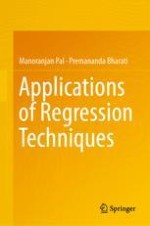2019 | OriginalPaper | Chapter
4. Estimating Calorie Poverty Rates Through Regression
Authors : Manoranjan Pal, Premananda Bharati
Published in: Applications of Regression Techniques
Publisher: Springer Singapore
Activate our intelligent search to find suitable subject content or patents.
Select sections of text to find matching patents with Artificial Intelligence. powered by
Select sections of text to find additional relevant content using AI-assisted search. powered by
